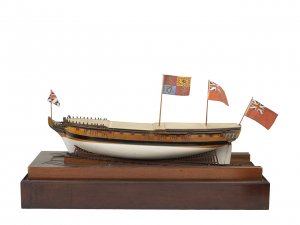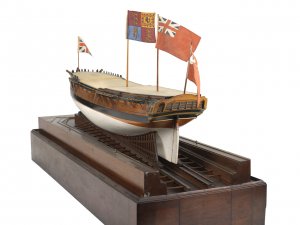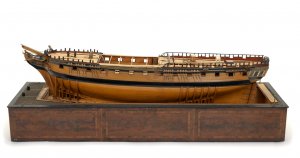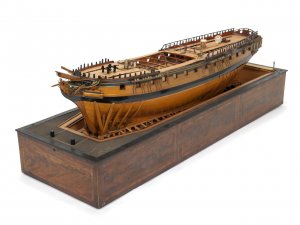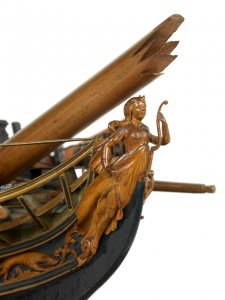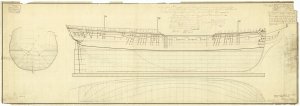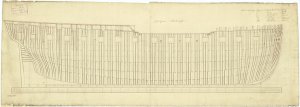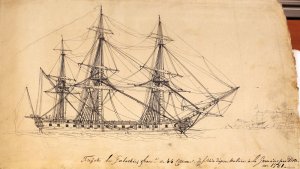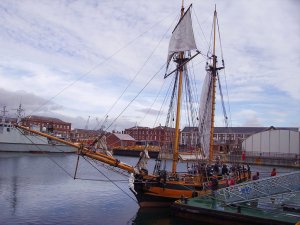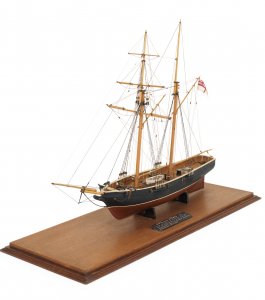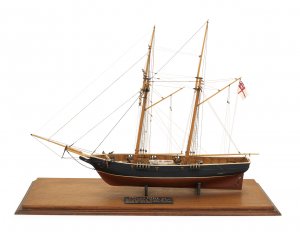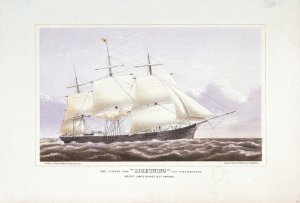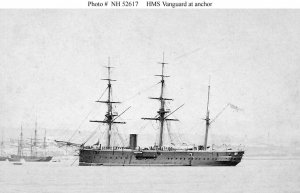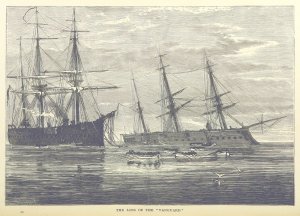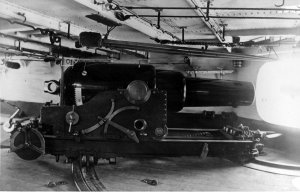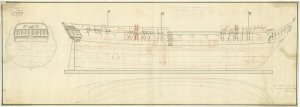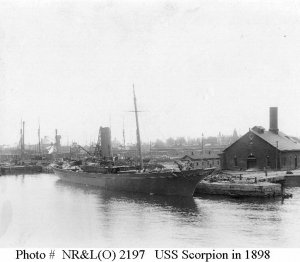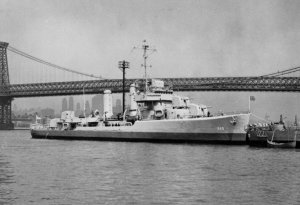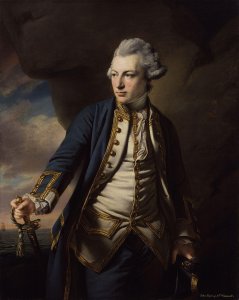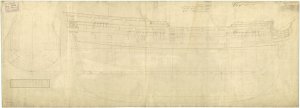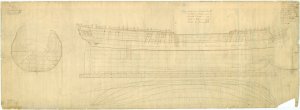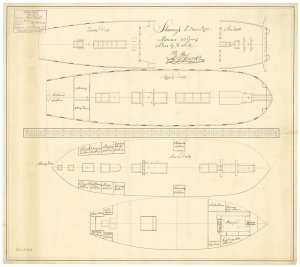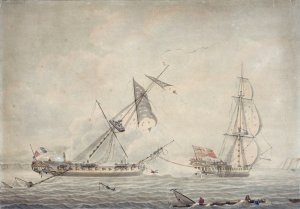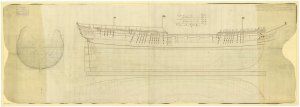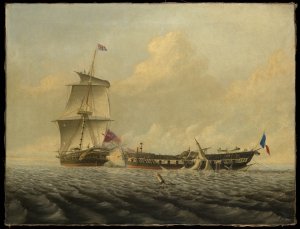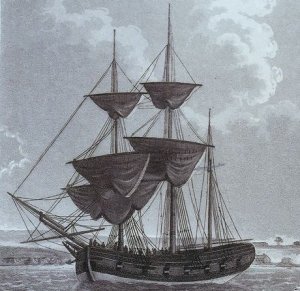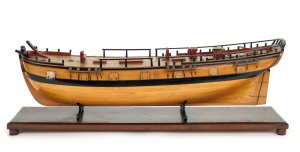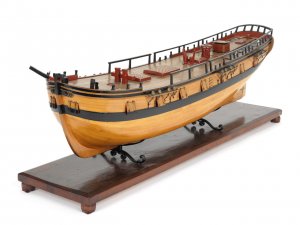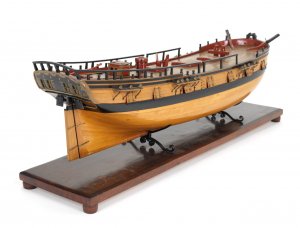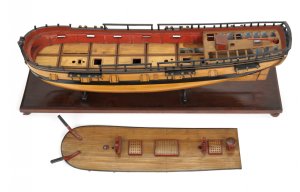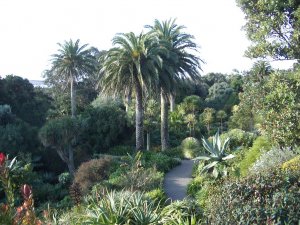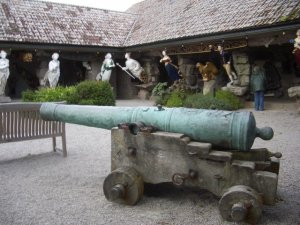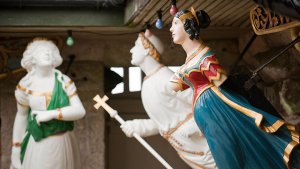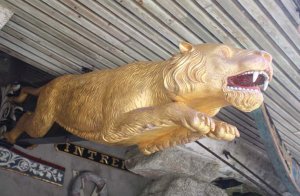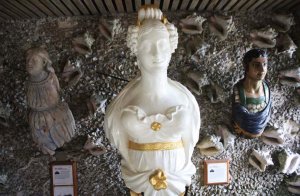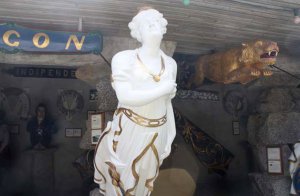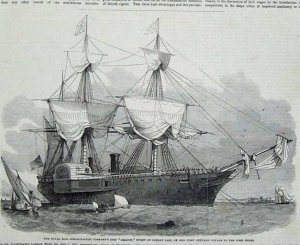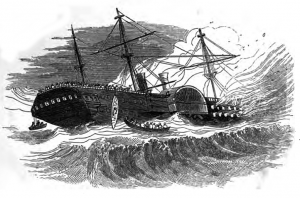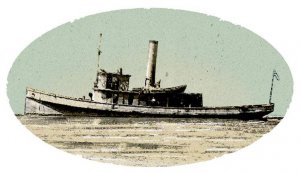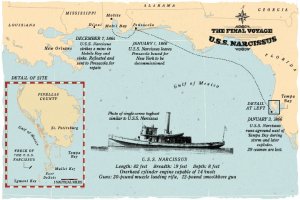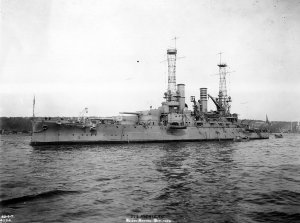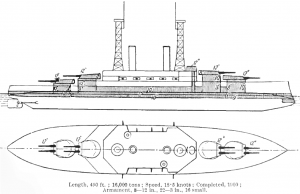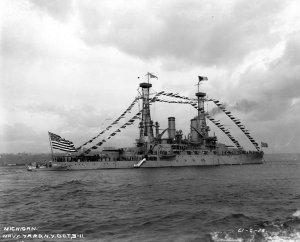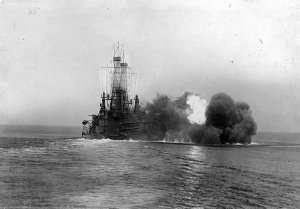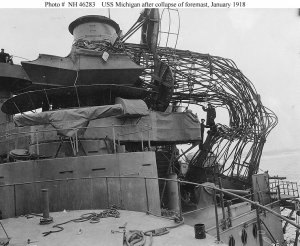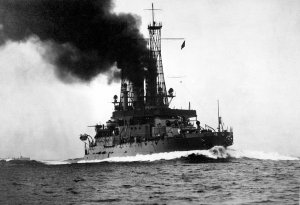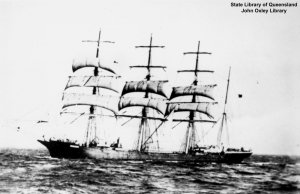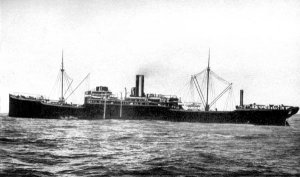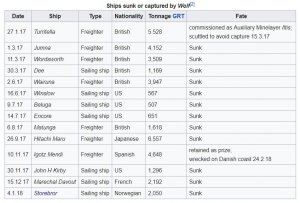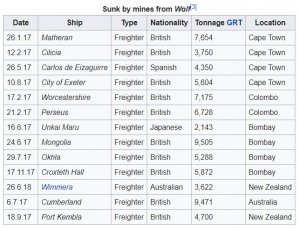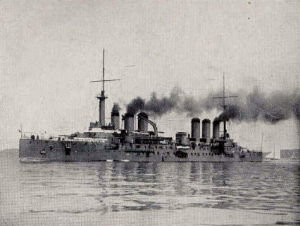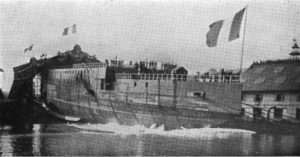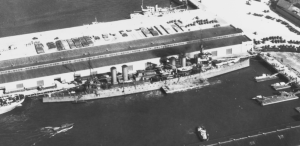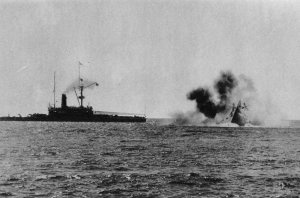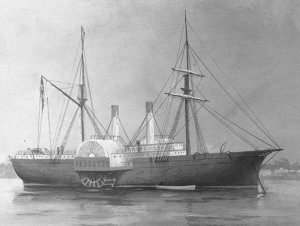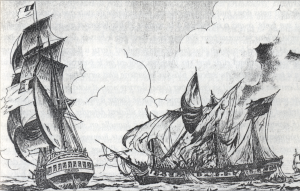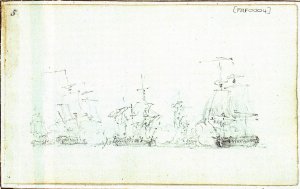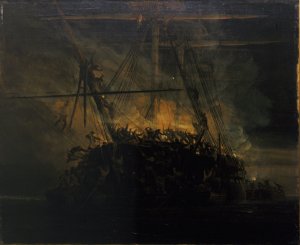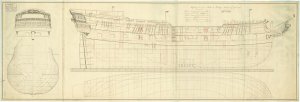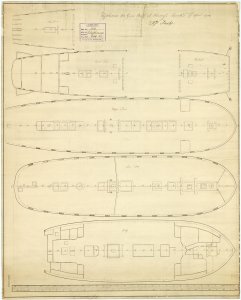Today in Naval History - Naval / Maritime Events in History
3 January 1695 - Start of a 2 day capture of the HMS Nonsuch (1668 – 36) and HMS Falcon (1694 – 38) by the French La Francois (1687 – 50) near Isles of Scilly.
HMS Nonsuch was a 36-gun fifth rate of the Royal Navy. She was an experimental fast-sailing design, built by the renowned shipwright Anthony Deane according to proposals by the Dutch naval officer Laurens van Heemskirk, who became her first captain. She was launched in December 1668, and commissioned the same day under van Heemskirk. In 1669 she was reclassed as a 42-gun Fourth rate, being commanded from 9 April by Captain Sir John Holmes.
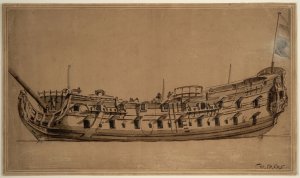
An English fourth-rate seen from before the port beam with, on the broadside, nine guns on the gun deck, ten on the upper deck (square decorated ports) and three in wreathed ports on the quarterdeck. There are eight sweep ports between the guns on the gun deck. This is a pen and brown ink drawing with a wash over the preliminary work in pencil. It has been signed by the Younger, ‘W.V.VJ’. The ship may be one of the 42-gun fourth-rates which in 1677 were armed with twenty guns on the gun deck, eighteen on the upper deck and four on the quarterdeck. They were the ‘Assurance’ (1646) ‘Constant Warwick’ (1646, rebuilt 1666) ‘Falcon’ and ‘Sweepstakes’ (1666), ‘Nonsuch’ (1668) and ‘Phoenix’ (1671). Other drawings and the small number of gun-deck ports led Robinson to suggest the ‘Assurance’ as most probable, but she was sold in 1698 and he considered it unlikely she would have been drawn as late as 1701, which the style here suggests. By the style and paper he related this drawing to PAH5024, which shows the ‘Seahorse’ of 1694 and could be more certainly dated to about 1701. Both are very accurate drawings in pen and brown ink and the early features here, such as the square decorated ports, might be accounted for if it is this drawing is based on an offset from an earlier example. Robinson, however, fails to say whether the ‘Assurance’ of 1646 was rebuilt in 1675, the date he ascribes to the ship as shown.
Class and type:
Length:
Draught: 12 ft 8 in (3.86 m)
Depth of hold: 10 ft 10 in (3.30 m)
Propulsion Sails
Sail plan: Full rigged ship
Complement:
She was to spend most of her career in the Mediterranean. She was for a time based on Tangier, and was commanded by a succession of accomplished commanders who subsequently rose to flag rank in the Navy, including George Rooke from 1677 to 1680, then briefly under Cloudesley Shovell, and then Francis Wheler from 1680 to 1681. Under Wheler's command, she participated on 9 April 1681 in the capture of the Algerine 46-gun Golden Horse, along with the Fourth rate Adventure.
She reverted to a 36-gun fifth rate in 1691, and was recommissioned under Captain Richard Short, for service off New England. Command passed in January 1693 to Captain Thomas Dobbin, then in November 1693 to Captain Thomas Taylor. She was captured off the Scilly Isles on 4 January 1695 by the French 48-gun privateer Le François; renamed Le Sans Pareil, she subsequently served in the French Navy until 1697.
HMS Falcon (1694), a sistership of Nonsuch, was converted from a merchant ship in 1694 to a 38-gun fifth rate. She was captured by the French in 1695
https://en.wikipedia.org/wiki/HMS_Nonsuch_(1668)
https://threedecks.org/index.php?display_type=show_ship&id=5575
3 January 1695 - Start of a 2 day capture of the HMS Nonsuch (1668 – 36) and HMS Falcon (1694 – 38) by the French La Francois (1687 – 50) near Isles of Scilly.
HMS Nonsuch was a 36-gun fifth rate of the Royal Navy. She was an experimental fast-sailing design, built by the renowned shipwright Anthony Deane according to proposals by the Dutch naval officer Laurens van Heemskirk, who became her first captain. She was launched in December 1668, and commissioned the same day under van Heemskirk. In 1669 she was reclassed as a 42-gun Fourth rate, being commanded from 9 April by Captain Sir John Holmes.

An English fourth-rate seen from before the port beam with, on the broadside, nine guns on the gun deck, ten on the upper deck (square decorated ports) and three in wreathed ports on the quarterdeck. There are eight sweep ports between the guns on the gun deck. This is a pen and brown ink drawing with a wash over the preliminary work in pencil. It has been signed by the Younger, ‘W.V.VJ’. The ship may be one of the 42-gun fourth-rates which in 1677 were armed with twenty guns on the gun deck, eighteen on the upper deck and four on the quarterdeck. They were the ‘Assurance’ (1646) ‘Constant Warwick’ (1646, rebuilt 1666) ‘Falcon’ and ‘Sweepstakes’ (1666), ‘Nonsuch’ (1668) and ‘Phoenix’ (1671). Other drawings and the small number of gun-deck ports led Robinson to suggest the ‘Assurance’ as most probable, but she was sold in 1698 and he considered it unlikely she would have been drawn as late as 1701, which the style here suggests. By the style and paper he related this drawing to PAH5024, which shows the ‘Seahorse’ of 1694 and could be more certainly dated to about 1701. Both are very accurate drawings in pen and brown ink and the early features here, such as the square decorated ports, might be accounted for if it is this drawing is based on an offset from an earlier example. Robinson, however, fails to say whether the ‘Assurance’ of 1646 was rebuilt in 1675, the date he ascribes to the ship as shown.
Class and type:
- 36-gun fifth rate (as launched)
- Re-rated as 42-gun fourth rate in 1669
- Re-rated as 36-gun fifth rate in 1691
Length:
- 97 ft 3.5 in (29.7 m)(gundeck)
- 88 ft 3 in (26.9 m) (keel)
Draught: 12 ft 8 in (3.86 m)
Depth of hold: 10 ft 10 in (3.30 m)
Propulsion Sails
Sail plan: Full rigged ship
Complement:
- 150 as Fifth Rate;
- 180 as Fourth Rate
- 40 in 1685:
- 20 demi-culverins,
- 16 sakers
- and 4 x 3-pounder guns
She was to spend most of her career in the Mediterranean. She was for a time based on Tangier, and was commanded by a succession of accomplished commanders who subsequently rose to flag rank in the Navy, including George Rooke from 1677 to 1680, then briefly under Cloudesley Shovell, and then Francis Wheler from 1680 to 1681. Under Wheler's command, she participated on 9 April 1681 in the capture of the Algerine 46-gun Golden Horse, along with the Fourth rate Adventure.
She reverted to a 36-gun fifth rate in 1691, and was recommissioned under Captain Richard Short, for service off New England. Command passed in January 1693 to Captain Thomas Dobbin, then in November 1693 to Captain Thomas Taylor. She was captured off the Scilly Isles on 4 January 1695 by the French 48-gun privateer Le François; renamed Le Sans Pareil, she subsequently served in the French Navy until 1697.
HMS Falcon (1694), a sistership of Nonsuch, was converted from a merchant ship in 1694 to a 38-gun fifth rate. She was captured by the French in 1695
https://en.wikipedia.org/wiki/HMS_Nonsuch_(1668)
https://threedecks.org/index.php?display_type=show_ship&id=5575



